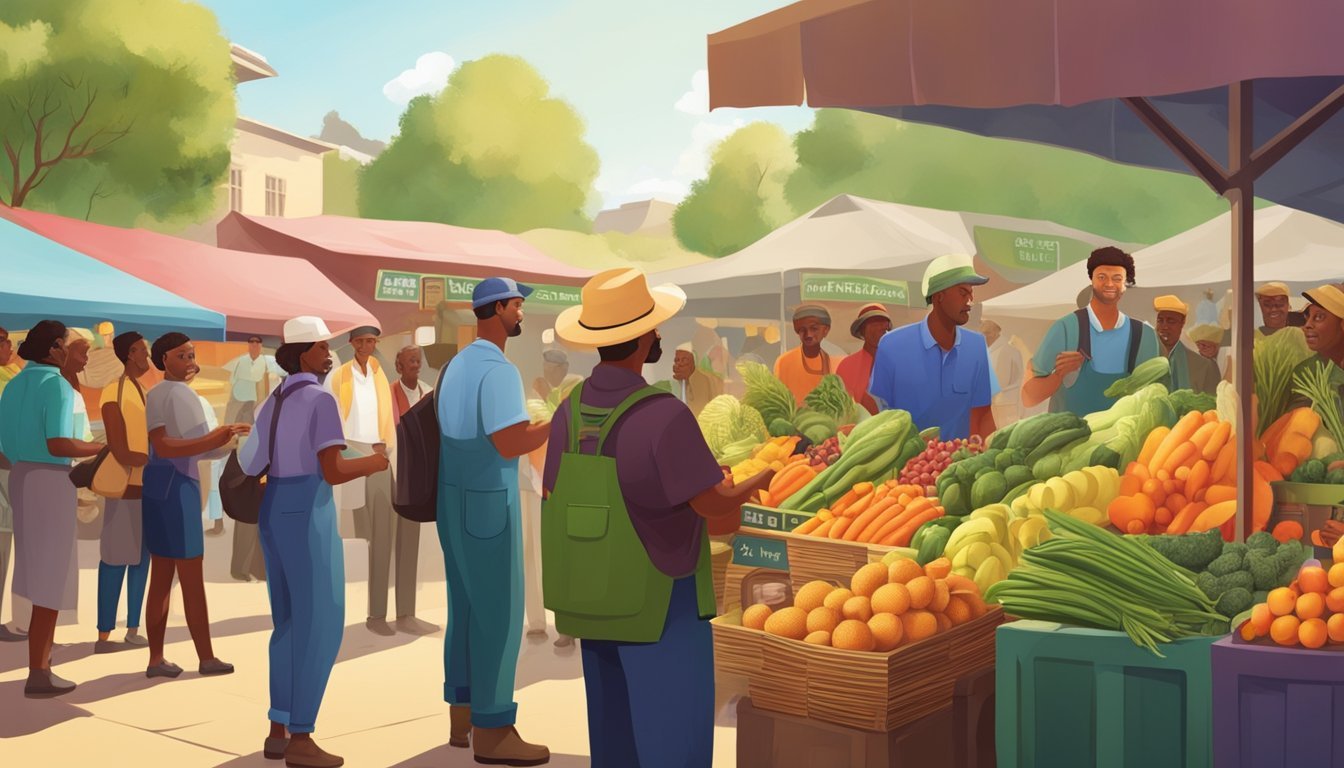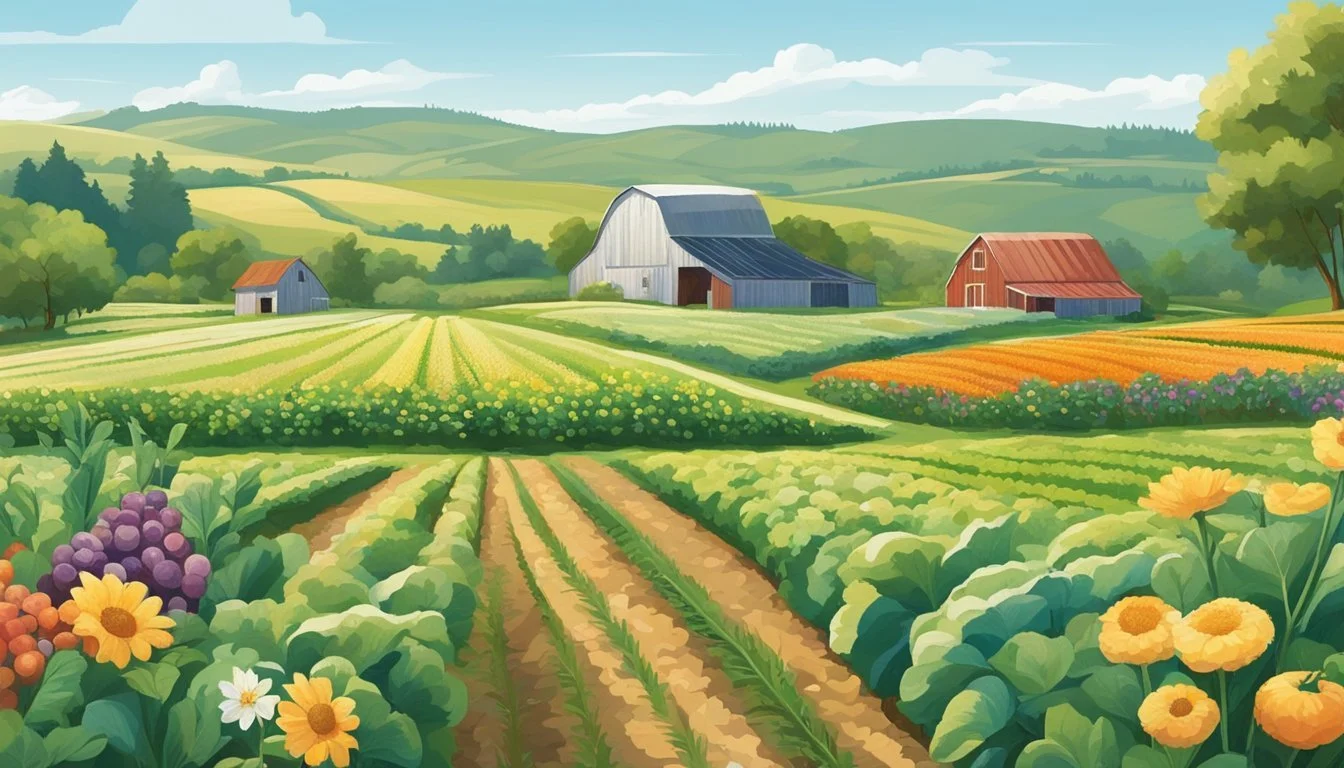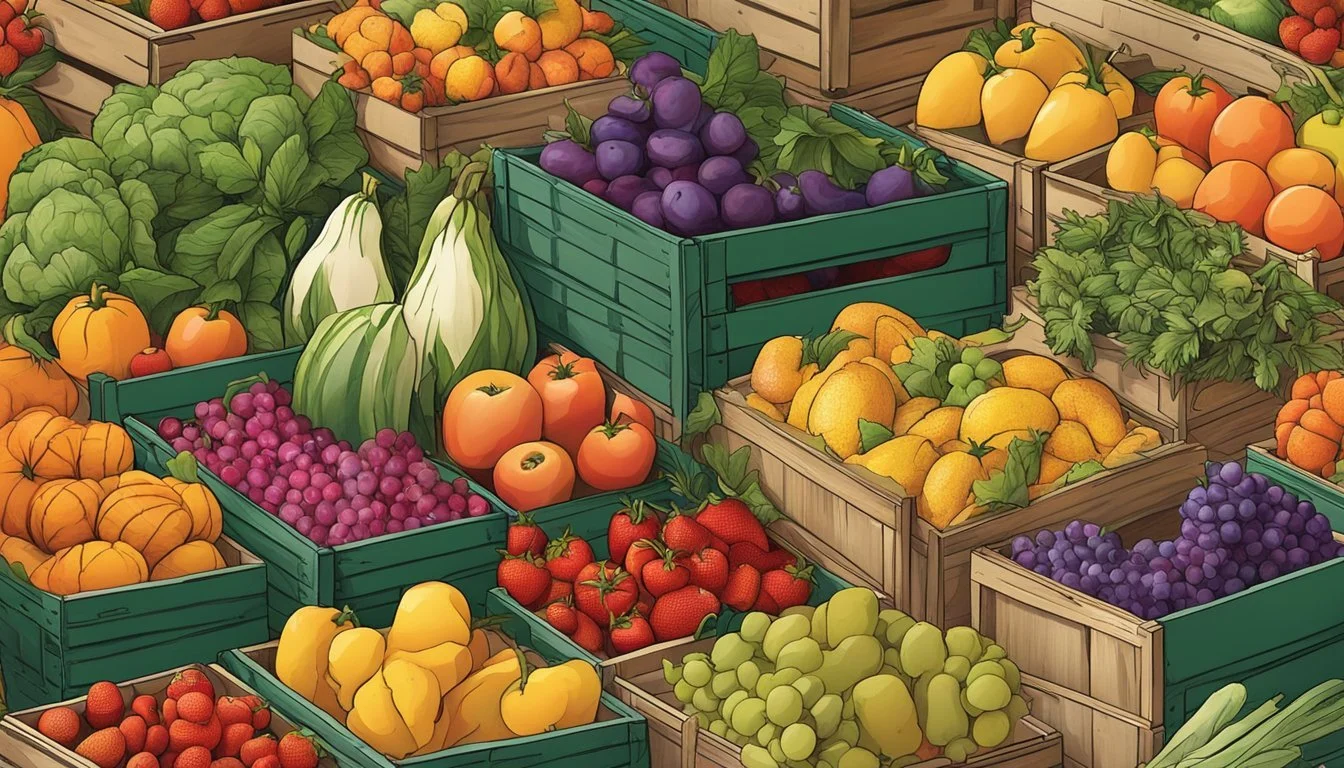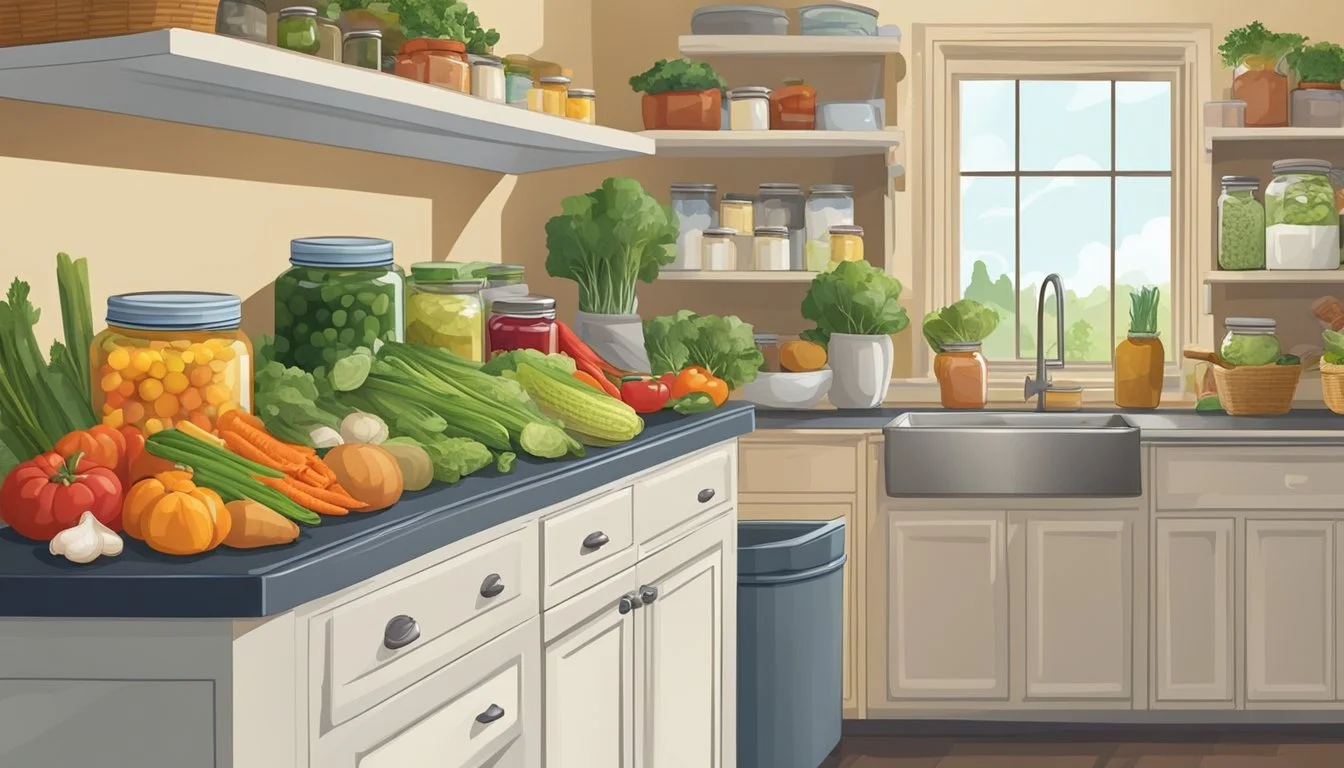Community Supported Agriculture (CSA) in Maine
A Guide to Local Farm Shares
Community Supported Agriculture, or CSA, has become an integral part of Maine's agricultural fabric, reinforcing the state's commitment to sustainable farming and local food security. With its roots in the cooperative ethos, CSAs represent a partnership between local farmers and consumers—shareholders who purchase a portion of the season's harvest upfront, providing farmers with necessary early-season capital. In return, shareholders receive a regular supply of fresh, locally grown produce throughout the farming season, fostering a direct connection between the people who grow food and those who eat it.
In Maine, the CSA model has seen substantial growth, reflecting a broader national trend that began in the mid-1980s. From just a few farms, the movement has expanded to include at least 100 CSAs within the state, as more consumers seek to support local agriculture and gain access to high-quality, organic produce. This growth is facilitated by organizations like the Maine Organic Farmers and Gardeners Association (MOFGA), which plays a pivotal role in educating farmers and the public about the benefits of organic farming and the CSA model.
Aside from vegetables, many CSA farms in Maine offer a diverse array of products, including fruits, meats, cheese, and other value-added products, ensuring a well-rounded diet for their members. The CSA model in Maine not only champions the cause of organic and sustainable agriculture but also contributes to local economies and the health of communities, embodying a resilient system that adapts to the needs of both farmers and consumers.
History and Principles of CSA
Community Supported Agriculture (CSA) represents a dynamic partnership between producers and consumers. This arrangement is characterized by members receiving regular shares of the harvest in return for pre-payment, sharing the risks and rewards of farming.
Origins of Community Supported Agriculture
The concept of CSA originated in its modern form in the 1960s with the Japanese Teikei movement. This was effectively a partnership between consumers and farmers which could be translated to "putting the farmer's face on food." CSA was later introduced into the United States by individuals like Robyn Van En, who co-founded one of the first American CSAs, Indian Line Farm in Massachusetts, in the 1980s.
Core Values and Mission
At its core, CSA is more than a purely economic transaction; it is about fostering a strong, committed relationship between growers and community members:
Mutual Support: Farmers receive financial support from members who buy shares of the harvest ahead of the season.
Risk Sharing: Members share in the inherent risks of agriculture (such as poor harvests due to weather).
Community Engagement: Encourages direct interaction between farmers and consumers.
Education: Provides an avenue for consumers to learn about farming practices and seasonal cycles.
Sustainability: Aims to foster environmentally friendly farming practices and local food production.
Maine's CSA Landscape
Maine has a vibrant CSA network, with organizations such as the Maine Organic Farmers and Gardeners Association (MOFGA) promoting and supporting local farms through CSA models. This has helped many small farms in Maine to maintain financial stability and encouraged sustainable farming practices across the state.
Benefits of Participating in CSA
Participating in Community Supported Agriculture affords tangible perks for various stakeholders. It not only bolsters local agriculture but also enables environmentally friendly practices and affords consumers with fresh produce.
Support for Local Farmers
Local farms gain a dependable stream of income through CSA programs. By purchasing shares of the harvest in advance, consumers provide farmers with the necessary funds to plan and manage their agricultural operations. This upfront payment model helps mitigate financial risks associated with crop failures or fluctuations in market demand. Certified organic farms, often part of CSAs, also receive support which can aid in maintaining organic certification standards.
Environmental Impact
Community Supported Agriculture is an embodiment of sustainability. Members receive produce that is environmentally responsible, grown using methods that aim to conserve soil and water while reducing pollution. The prominence of CSA in Maine signifies a collective drive towards lower carbon footprints since food travels shorter distances, slashing transportation emissions.
Consumer Advantages
From a consumer perspective, joining a CSA delivers multiple benefits:
Freshness and Quality: CSA members enjoy a rotating supply of seasonal, often certified organic, produce.
Knowledge of Food Sources: Consumers develop an understanding of where and how their food is grown, fostering a connection with the local farm.
Cost-Effectiveness: Buying directly from farmers can reduce costs, providing financial advantages for consumers over time.
How CSA Works
Community Supported Agriculture (CSA) in Maine represents a partnership between local consumers and farmers where members buy shares of the season's harvest and receive a weekly box of fresh produce.
Structure of CSA Programs
CSA programs function by allowing members to purchase shares in advance, essentially investing in a farm's seasonal production. This model provides farmers with up-front capital to cover anticipated costs for the growing season. In return, members share in the risks and benefits, including the quantity and quality of the harvest. Shares are typically distributed weekly and can be picked up at designated locations or delivered for convenience.
Seasonality and Crop Variety
Maine's CSA programs offer a range of produce that reflects the region's farming conditions and the changing seasons. Members commonly receive a mix of vegetables and occasionally fruit, depending on the farm. Summer shares might be abundant with salad greens, berries, and tomatoes, while fall shares could include root vegetables, apples, and squash. The diversity in each box showcases the farm's variety and ensures members a rich palette of flavors and nutrients throughout the season.
Membership and Shares
CSA membership involves selecting a share type that suits the individual's or family’s needs. Share options might include full or half sizes, indicating the amount of produce to expect in each box. Full shares are ideal for larger households or vegetarians, while half shares may suffice for smaller families or those new to CSA. Some farms also offer specialized shares like "fruit only" or "salad lovers," catering to specific preferences. Participation in a CSA is both a commitment to local agriculture and an opportunity to enrich one's diet with fresh, organic food.
Finding and Joining a CSA in Maine
Joining a Community Supported Agriculture (CSA) program in Maine supports local farmers and provides fresh, organic produce throughout the farming season. Individuals can enjoy a share of the harvest each week and participate in a sustainable food system.
Choosing the Right CSA
When selecting a CSA, individuals should consider the variety of produce offered, pickup locations, and the length of the subscription season. Most CSAs provide weekly shares, but some offer bi-weekly options. It's important to assess the volume of food provided and determine if it meets personal or family needs. Some farms also offer the option of working on the farm in exchange for a portion of the harvest.
Maine Organic Farmers and Gardeners Association (MOFGA)
MOFGA plays a significant role in supporting CSA farms throughout Maine. The association provides resources for both farmers and consumers, including a comprehensive list of CSA farms. Potential members can use MOFGA's website to find local CSA options, learn about organic farming practices, and understand the benefits of joining a CSA.
Maine Harvest Bucks Program
The Maine Harvest Bucks Program incentivizes CSA membership by providing financial assistance. Participants who use SNAP/EBT benefits to purchase shares in a CSA can receive additional Maine Harvest Bucks, which increases their purchasing power for local food. This program not only helps individuals afford CSA shares but also encourages the consumption of healthy, locally-sourced produce.
What to Expect as a CSA Member
As a CSA member in Maine, one enters a unique relationship with local agriculture that brings education and community spirit to the forefront. Individuals not only receive fresh, seasonal produce but also actively support the growth and sustainability of local farms.
Season Long Commitment
CSA Members typically agree to a season-long partnership. They purchase a "share" of the farm's harvest, receiving weekly or bi-weekly boxes of produce throughout the farming season. The length of the season can vary but generally spans from late spring to early fall.
Duration: Late spring through early fall
Frequency: Weekly or bi-weekly
Community Engagement
Being part of a CSA means more than just receiving food; it's about building a Relationship with the farmer and other like-minded individuals. Members might have the opportunity to visit the farm, attend potlucks, or partake in workshops, solidifying a sense of community connection.
Farm Visits: Interact with the farm and farmers
Social Events: Connect with fellow CSA members
Learning About Agriculture
Education is a cornerstone of the CSA model. Members learn about the food they eat, including how it's grown and the challenges of farming. This educational aspect fosters a deeper appreciation for sustainable farming practices.
Farming Challenges: Understand the complexities of organic farming
Sustainable Practices: Discover eco-friendly agriculture methods
The Role of CSA in Local Economies
Community Supported Agriculture (CSA) in Maine has become a substantial contributor to local economies, forging strong relationships between farmers and consumers, while also influencing job creation. It not only represents a commitment to sustainable agriculture but also serves as a crucial financial backbone for rural areas.
Economic Impact on Rural Communities
In rural communities, CSAs provide a stable income for local farmers by allowing consumers to purchase shares of the harvest upfront. This infusion of early-season capital enables farmers to plan and budget more effectively, thereby stabilizing the financial foundations of rural economies. Moreover, CSAs help to keep the financial benefits within local communities and reduce the reliance on external markets.
Job Creation and Labor
CSA farms are labor-intensive, requiring a workforce throughout the growing and harvesting season. This need for labor translates into local job opportunities, often leading to seasonal employment. The direct link between the farm’s financial health and its capacity to hire indicates that successful CSAs can contribute to a reduction in rural unemployment rates.
Fostering Consumer and Farmer Relationships
CSAs encourage direct interactions between consumers and farmers, creating a sense of community and mutual reliance. Consumers gain a deeper understanding of where their food comes from, and farmers receive direct feedback and appreciation for their labor. This close relationship not only strengthens the community but can also lead to a more resilient local economy as consumers are more likely to support and sustain farms that they feel connected to.
Agricultural Practices in CSA Farms
Community Supported Agriculture (CSA) farms in Maine are committed to ecologically sound farming practices that ensure sustainable production and wholesome food.
Organic and Sustainable Farming
CSA farms in Maine often adopt organic farming methods which abstain from using synthetic pesticides and fertilizers. This approach emphasizes the use of compost to enrich soil fertility. Many farms aim to attain Certified Organic status, adhering to strict guidelines that guarantee the organic integrity of their produce.
Organic Approaches: Farms utilize natural processes and materials to enhance plant health and resist pests.
Certification: They seek certification to validate their practices and instill confidence in their CSA members.
Crop Rotation and Soil Health
Crop rotation plays a crucial role in maintaining soil health on CSA farms. This practice involves alternating the types of crops grown in each field from season to season to prevent soil depletion, control pests, and diseases, and promote a balanced ecosystem.
Rotation Schedule: CSA farms implement a rotation schedule to preserve the long-term viability of their soil.
Soil Enrichment: The integration of compost and green manures helps in restoring essential nutrients to the soil.
Animal Husbandry
Animals on CSA farms are typically raised using sustainable and ethical practices. Their care focuses on promoting health and well-being through natural livestock rearing methods and access to pasture.
Ethical Treatment: Animals are provided with spacious living conditions that allow for natural behaviors.
Pasture Access: Livestock is encouraged to graze, leading to healthier animals and enriched soil quality through natural manure dispersal.
CSA Product Diversity
Community Supported Agriculture in Maine showcases an impressive range of products from traditional vegetables to specialty crops. Local farms are using innovative methods to provide fresh, organic produce and various farm products to their CSA members.
Vegetable CSAs
Vegetable CSAs form the backbone of the community-supported agriculture model. In Maine, members can expect a seasonal selection of vegetables that often include:
Greens: such as lettuce, spinach, and kale, offering a variety of leafy options.
Root vegetables: with a focus on carrots and beets, valued for their freshness and taste.
Nightshades: like tomatoes, which are a staple in many households for their versatility in recipes.
Farmers prioritize organic methods to ensure these vegetables are grown without the use of synthetic pesticides or fertilizers.
Meat and Dairy CSAs
Meat and dairy are crucial elements of Maine's CSA offerings. These products stem from the commitment to organic, ethically-raised animals, ensuring high-quality:
Meat: including beef, pork, and poultry, from animals raised on pasture.
Dairy: fresh milk, cheese, and sometimes yogurt from local dairy farms.
CSA shareholders can often also obtain eggs from free-range chickens as part of their subscription.
Specialty Crop CSAs
Beyond the typical fare, some Maine CSAs focus on specialty crops to cater to diverse tastes and preferences:
Fruit offerings may include apples from organic orchards, revered for their natural sweetness and health benefits.
Specialty crops allow farms to offer unique products that might not be available at traditional grocery outlets, enhancing the CSA’s value and appeal.
Challenges Faced by CSA Farms
Community Supported Agriculture (CSA) in Maine encounters specific hurdles, such as the unpredictability of weather impacting crop yields, the complexity of marketing and distribution strategies, and the critical need for robust financial planning to ensure sustainability.
Climatic Factors and Crop Yield
CSA farms operate at the mercy of the regional climate, which can be volatile. Unpredictable weather patterns in Maine, ranging from extended droughts to unseasonably cold temperatures, can adversely affect crop yields. For instance, an unexpected frost can damage or destroy crops that are sensitive to cold temperatures. Efficiently managing crop diversity and implementing preventative measures are essential for mitigating these risks.
Marketing and Distribution
Marketing Plan: A CSA's success is largely dependent on its ability to attract and retain customers. Farms must devise innovative marketing plans that utilize multiple channels, such as social media, local markets, and community events to raise awareness.
Distribution: Efficient distribution is another challenge, as CSA farms must ensure fresh produce reaches their members promptly. This involves coordinating drop-off points, managing delivery schedules, or partnering with local businesses to facilitate convenient pick-up locations for CSA members.
Financial Sustainability
Financial Planning: Establishing a solid financial foundation is crucial for CSA farms. This includes setting share prices that cover operational costs, while also being attractive to potential members. They must consider cost-effective methods of production and seek ways to expand income avenues, such as through value-added products.
Farms must also build contingencies into their financial planning to buffer against poor harvests or fluctuations in membership that may impact their revenue. Establishing an emergency fund can be one tactic to improve financial resilience.
CSA Beyond Produce
Community Supported Agriculture (CSA) in Maine extends beyond the distribution of fresh produce to include various programs that enrich the community and local economy through education, value-added products, and partnerships.
Educational Programs and Events
CSAs in Maine often host educational programs and events aimed at increasing agricultural awareness and skills among community members. These may include practical farming workshops, cooking classes utilizing seasonal produce, or farm-to-table events that both educate and create a sense of community around local food systems.
Adding Value Through Processed Goods
Many Maine CSAs add value to their harvest by creating processed goods. Items such as jams, cheeses, and pickled vegetables (What wine goes well with pickled vegetables?) are common. This not only provides members with a wider variety of products but also helps farms maintain a stable income year-round, as many of these goods have a longer shelf life than fresh produce.
Examples of Value-added Products:
Homemade berry jams
Artisanal cheeses
Herbal tinctures and teas
Community Partnerships
CSAs in Maine thrive through community engagement and local partnerships. Collaborations with local schools for educational farm visits, or with businesses for supplying local organic produce, serve to strengthen community bonds and foster a supportive environment for sustainable agriculture.
Partnership Benefits:
Education: Students learn about sustainable farming practices.
Community Engagement: Increased local support for CSAs.
Local Partnerships: Joint efforts with local businesses for a robust local food economy.
Cooking and Storing CSA Goods
When incorporating CSA goods into their diet, individuals can benefit from creative recipes that showcase the fresh flavors, as well as effective storage techniques to prolong the life of produce. Thoughtful meal planning is key to making the most of these seasonal offerings.
CSA Recipe Ideas
For those new to CSA boxes, it's helpful to have a range of recipes ready for the variety of produce they receive. A high-quality CSA box in Maine could include leafy greens, root vegetables, summer squash, and heirloom tomatoes, offering a canvas for both simple and complex dishes. One can start with simple salads or roasted vegetable medleys to appreciate the fresh flavors. They may also experiment with herb-infused dressings utilizing CSA herbs or create a vegetable stir-fry (What Wine Pairs Perfectly With Vegetable Stir-Fry?) complemented with local meats or tofu for a healthy, balanced meal.
Preservation Techniques
The lifespan of CSA produce can be extended through proper preservation methods. Root vegetables like carrots and potatoes are best kept in a cool, dark, and well-ventilated space to prevent spoilage, while leafy greens should be stored in a refrigerator's crisper drawer after being wrapped lightly in paper towels to absorb excess moisture. For longer-term storage, canning and freezing are viable options. Tomatoes, for example, can be canned as sauces or salsas for future consumption, and berries can be frozen on a tray before being transferred to airtight containers.
Meal Planning with CSA Produce
Effective meal planning with CSA produce hinges on a clear understanding of the perishability of different items. For those who receive a weekly CSA box, it's ideal to consume the most perishable items, such as berries and salad greens, early in the week. Sturdier vegetables, like squashes and beets, can be utilized in later meals. Planning meals ahead and prepping ingredients in batches ensures a seamless incorporation of nutritious CSA goods into one's daily diet. They can consider a mix of raw and cooked dishes throughout the week to maximize the use of all produce before the next CSA delivery.











